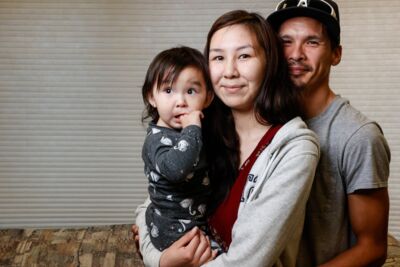An Innovative Approach to Addressing Homelessness

As Alaska Housing Rent Relief began to wind down, AHFC staff jumped at an opportunity to help the state's homeless population.
Alaska was one of a handful of states to provide rent relief to all eligible applicants, meeting a key distribution threshold set by U.S. Treasury. That provided a unique chance to assist homeless individuals across the state. Alaska Housing repositioned the remaining Emergency Rental Assistance funds for an innovative new program called Housing Stabilization and Recovery.
Addressing a Need
The program began in February 2022, with a goal of getting people off the streets, out of shelters and into stabilized housing. From there, housing navigators work with clients to find a rental unit for a longer period of time.
The nationwide challenges of truly addressing the needs and issues surrounding homeless populations have long been studied, along with an acknowledgement that the existing system has not effectively addressed the entire homelessness cycle.
Alaska Housing implemented an innovative, holistic approach to the challenge: The Alaska Housing Stabilization and Recovery program. The new program can quickly stabilize people into safe, short-term housing, then move them into more permanent housing while simultaneously providing a full spectrum of critical support resources with the ultimate goal of self-sufficiency.
Housing Stabilization and Recovery Process
The program seeks to quickly stabilize homeless Alaskans in transitional housing units, using navigators with established nonprofit organizations that work with homeless populations. More than 20 nonprofit agencies are enrolled as program navigators with operations in 10 communities including Anchorage, Bethel, Fairbanks, Kenai, Ketchikan, Kodiak, Juneau, the Mat-Su Valley, Petersburg, and Prince of Wales.
Stabilization and recovery stages are managed by a single point of client contact. The program is flexible and is driven by client needs rather than program checklists. Navigators meet clients where they’re at, whether that’s on the street or in shelters.
Navigators Guide Process
Navigators first assess the client’s needs, often within minutes, and then immediately move the client into short-term housing. Within 90 days they help household members locate and move into longer-term housing.
Navigators create, manage, and update a client’s record on a monthly basis for Alaska Housing. Rental assistance is paid on behalf of the tenant to their new landlord by one of AHFC’s designated nonprofit partners. Navigators continue to engage with clients on a monthly basis to confirm participation and provide any necessary services with any remaining funds.
A New Beginning
AHFC’s Housing Stabilization and Recovery efforts serve Alaska’s most vulnerable populations. To date, more than 1,000 individuals have been moved out of homelessness as a result.
Progress is also being made in helping individuals achieve self-reliance. Through mid-September, 80 households had transferred out of the program either because they had become self-sufficient or had transferred to other funding sources.
Program Eligibility
To qualify for the program, individuals must satisfy eligibility criteria that includes their housing status and household income.
- Housing Status: Individuals must lack a safe place of their own to sleep at night. This can include sleeping outside, in a car, or in a homeless shelter. It can also include individuals fleeing human trafficking, domestic violence or abusive households.
- Income: A household must be at or below 80% of the area median income.
What Funds Are Used For
Housing Stabilization and Recovery funds are used for rental assistance and housing stability support. This can include:
- Up to 12 months of rental assistance for 100% of the rent for the leased unit.
- Housing stability support, such as rental unit move-in or damage deposits, for up to 15 months per household. This can include three months in stabilization status, 12 months in lease status.
- Case management during stabilization is available as needed.
Outcomes are updated and reported weekly via an online dashboard. Click here for more information about the Housing Stabilization and Recovery program.
![Alaska Housing Finance Corporation [Logo]](/application/themes/ahf2/images/logo.png?v=2)